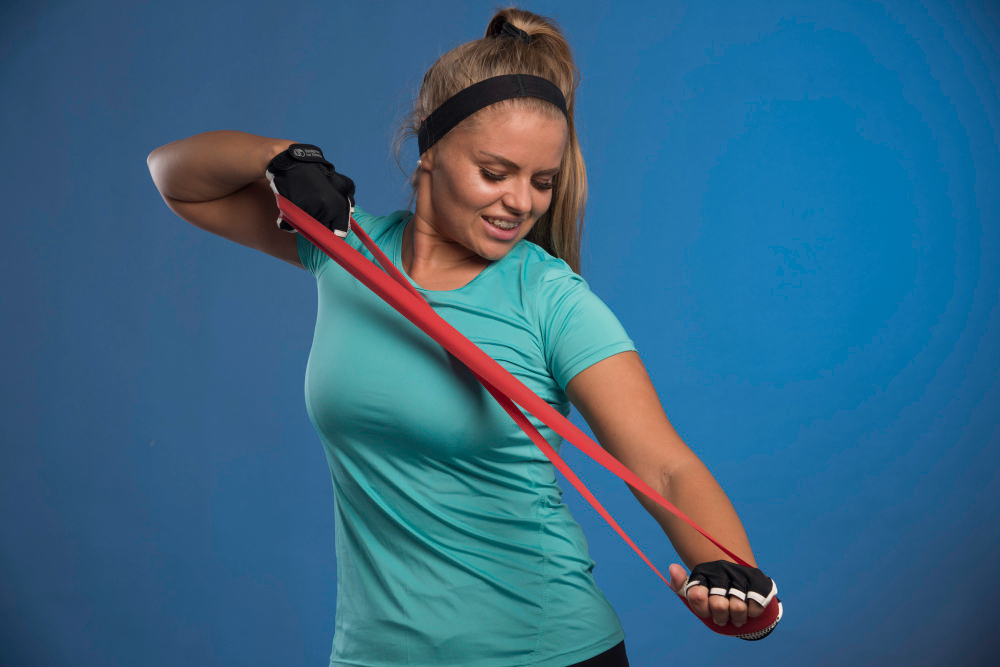If you’ve ever strapped on a resistance band for leg extensions and thought, “Why do I even bother?”, you’re not alone. A lot of people do a few reps, feel nothing but frustration, and ditch the exercise altogether. Here’s the truth: it’s not the band’s fault. It’s usually the way you’re setting it up or not using the right technique to actually load the muscle properly. Done right, resistance band leg extensions can torch your quads just as much as a machine. You just need to fix the fundamentals.
Why Resistance Band Leg Extensions Often Feel Ineffective
Most of the time, banded leg extensions feel useless because of two main problems: tension and control.
First, bands don’t provide constant tension like a machine does. The resistance changes depending on how stretched the band is. If the band is loose at the start or loses tension halfway through the movement, your quads aren’t working the full range, they’re barely working at all.
Second, people rush the reps. They kick their leg out fast, let it snap back down, and call it a set. That’s not training; that’s just moving. Without slowing things down and controlling the movement, your muscles don’t have time to engage properly. No tension = no activation = no results.
Finally, bad positioning ruins everything. If your setup is sloppy (wrong band height, bad seat angle, foot flopping around) you’re basically making it impossible for your quads to do their job.
How to Actually Activate Your Quads Properly
If you want to actually feel your quads working during resistance band leg extensions, you have to be intentional with every part of the setup and execution. Here’s how:
- Anchor the Band Correctly: Attach the band low to the ground but not flat on the floor. About ankle to mid-shin height is ideal. This keeps tension aligned with your natural kicking path.
- Preload the Band: Before you even start, the band should already feel tight. If there’s slack at the start, you’re setting yourself up for failure.
- Body Position: Sit down with a slight backward lean (around 20–30 degrees). This shifts your quads into a more engaged position without straining your hip flexors.
- Foot Placement: Flex your foot slightly (pull toes toward your shin) while kicking out. It stiffens the leg and directs more tension into the quad.
- Controlled Reps: Extend your leg slowly, 2 seconds up, hold for 1-2 seconds at full extension (where the burn really starts), and lower back down in 3-4 seconds. No bouncing. No cheating.
- Mind-Muscle Connection: While you rep, think about squeezing your quad as hard as possible at the top. If you aren’t mentally connected to the muscle, you won’t recruit it properly.
If you’re a seasoned athlete and want to find a way to incorporate resistance bands into your speed workout, try out the speed-focused resistance band training.
Troubleshooting Common Problems
Even with good intentions, stuff can still go wrong. Here’s how to fix the most common issues:
Problem: The Band Feels Too Easy
Solution: Double up the band or step farther back to increase stretch. If you still don’t feel challenged, slow down your reps dramatically and add pauses. Time under tension > heavier band every time.
Problem: No Quad Burn or Activation
Solution: You’re probably rushing or losing tension somewhere. Preload the band, lean back slightly, and squeeze your quad hard at the top of every rep. Go slow up, slower down, and maximum squeeze.
Problem: Knee Pain During the Exercise
Solution: Check your alignment. Your shin should stay vertical when starting the move (don’t let your knee cave inward or outward). Also, cut down the range of motion slightly until you build more strength. And ditch overly thick bands that might be pulling your joint out of a clean path.
Why not use our 3-day free pass at our Brunswick gym to do these exercises in a supportive environment before you take your workout home?
Final Thoughts
Resistance band leg extensions aren’t a waste of time, you just have to stop treating them like an afterthought. Set up the band right, control every inch of the movement, and stay connected to the muscle you’re trying to train. When you do it properly, your quads will light up.





